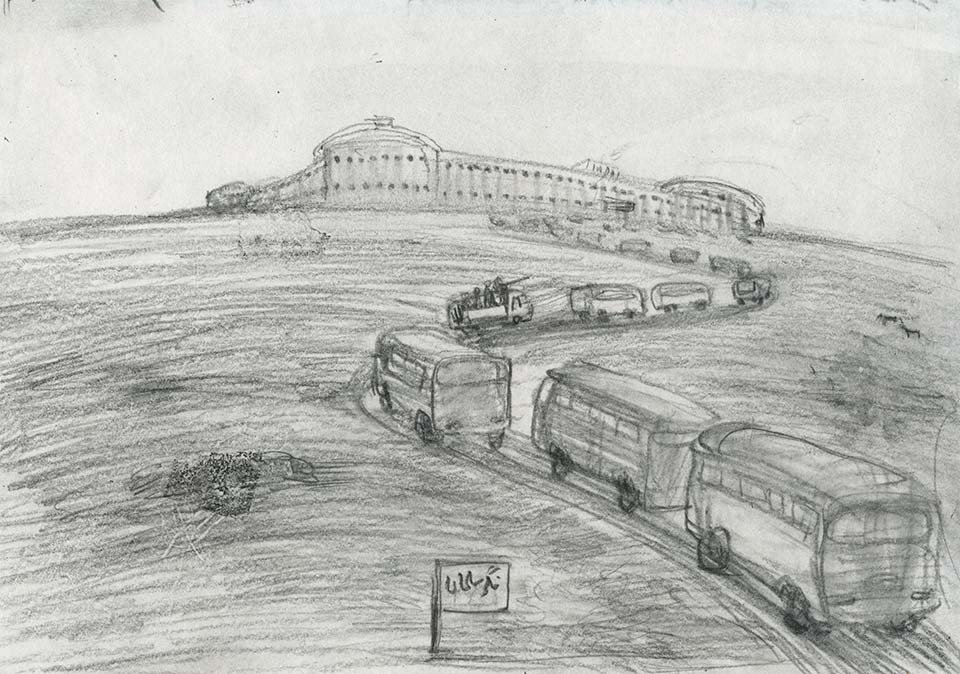Osman Ahmed
Testimony 5 – Mrs. Shms
Pencil on paper
17 drawings, 20 x 14 cm
Testimony 13 – Mr. Jmm
Pencil on paper
27 drawings, 20 x 14 cm
A series of drawings depicts, in storyboard format, the testimonies of survivors of the 1988 Anfal genocide, in which up to 180,000 Kurds were killed by Saddam Hussein’s Ba’athist regime.
Osman Ahmed’s PhD project in 2013 investigated the Kurds’ collective memory of the Anfal genocide. He recorded the testimonies of 15 Anfal survivors in 355 individual drawings.
“Most of my drawings come from memory and my past experience as an eye witness, to years of political and cultural repression, culminating in the horrendous Anfal event in 1988 that left a profound effect on my life,” Ahmed said in a statement. “By presenting a body of works, I attempt not only to record the genocide and a world of flashbacks and dreams, but to simultaneously investigate, explore and, to a large extent, make known my pain and feelings through the creative process. No artist can create disturbing works without having felt and/or shared the suffering of others. I use my drawings as a diary, recording painful narratives that through time and space, sequence by sequence, echo in my mind. I am surrounded by my drawings.”
Artist’s biography
Dr Osman Ahmed is a Kurdish-British artist based at the Kurdology Centre for Kurdish Studies, University of Sulaymaniyah, in the Kurdistan Region of Iraq.
He graduated with an MA in drawing from the Camberwell School of Arts in London (2007) and a PhD from the University of the Arts, London (2013).
Dr Ahmed has been an active guest speaker and member of panels at international conferences and seminars on genocide held in Britain, Iraq, Australia, Italy, Armenia and Austria. He was the recipient of the 2017 IAGS Prize for the Arts from the International Association of Genocide Scholars, University of Queensland, Brisbane, Australia.
Dr Ahmed has widely exhibited his artworks in the Middle East, Turkey, Europe and Britain, and participated in a three-month exhibition of his Anfal works at London’s Imperial War Museum in 2008.



